Shin Pain
The muscle located on the outside of the shin bone is responsible for pulling your toes towards the body and inverting the foot or bringing the arch of the foot upwards toward the body. Muscle knots in this muscle can cause pain in the big toe. The pain from tightness in this muscle is often mistaken for shin splints. Most people will find relief by using the Tiger Tail to roll out and stretch the muscle.
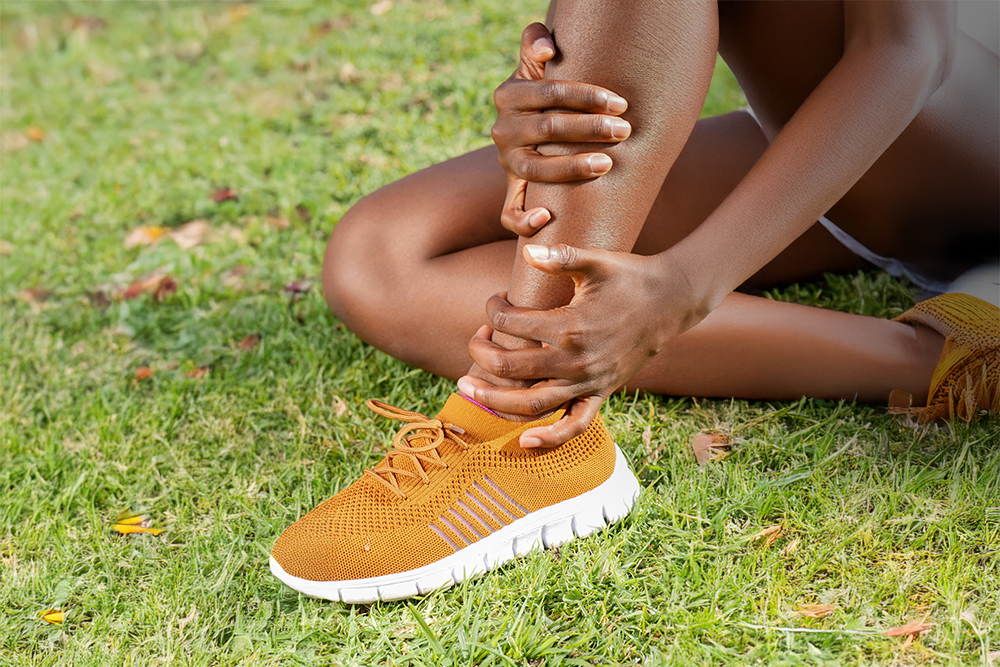
Causes
Hyperpronation: Hyperpronation, or excessive inward rolling of the foot, places unnatural strain on the calf muscles, particularly the soleus, making them highly prone to developing restrictive muscle knots. These muscle knots in the overstretched and overworked calf muscles can then cause a deep ache along the inside of the lower leg and contribute to shin splints and plantar fasciitis due to altered biomechanics. This can also lead to chronic calf tightness and persistent lower leg pain, often felt as a nagging ache after activity.
Muscle Overload: Your feet are the foundation of your body, and any issue can create a domino effect of muscle knots, pain, and imbalance that travels up to the ankle, knees, hips, and back. Muscle overload in the feet, often caused by repetitive strain, poor posture, or wearing ill-fitting shoes, can lead to pain and the formation of muscle knots. When muscles in the feet are subject to this chronic stress, they may become weak and prone to developing these painful knots, which can cause both localized and referred pain.
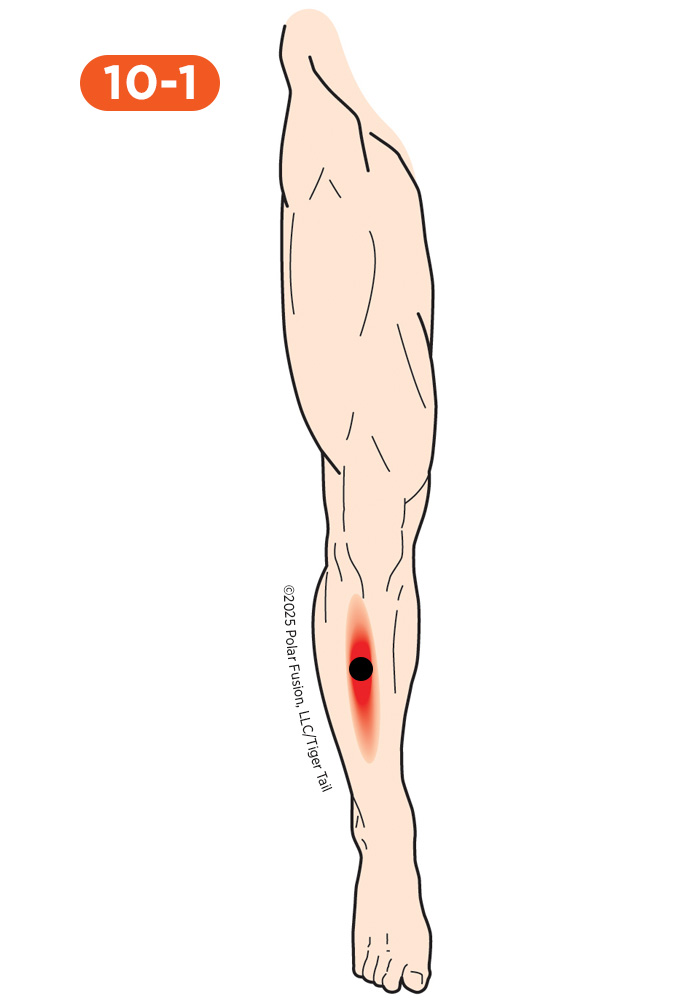
I Feel
Shin Splints
That classic shin splint pain along the front of your lower leg that runners know all too well? It’s often caused by tight muscle knots in the main muscle running down the front of your shin, the tibialis anterior. What you’ll feel is a sharp, burning ache along the front and outer edge of your shin bone that can feel like the muscle is tearing away from the bone. You’ll really notice the pain worsening when you’re running (especially on hard surfaces), walking downhill, doing jump rope exercises, increasing your training intensity too quickly, or even just walking around first thing in the morning. Here’s what makes this tricky: because the tibialis anterior works so hard to control your foot with every step, when it gets overworked and develops muscle knots, it can cause intense shin pain that can easily mimic stress fractures or compartment syndrome. Press along the front of your shin muscle. It’ll probably be tender and sensitive (sometimes even swollen), and your shin will feel tight and fatigued—like the muscle is constantly working overtime and can’t recover between activities.
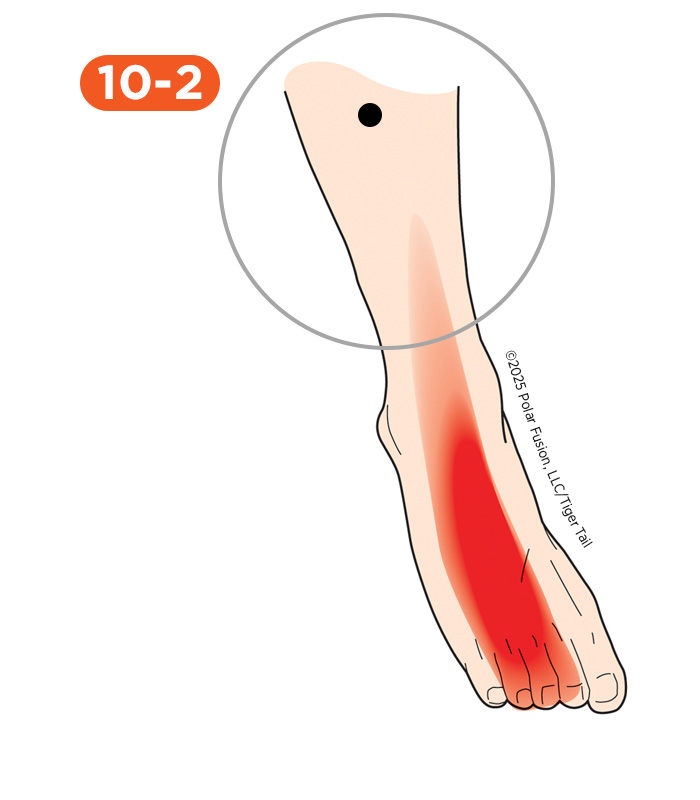
I Feel
Lower Shin Pain
When you feel pain in the lower part of your shin that extends toward your ankle, it could be caused by tight muscle knots in the muscle that lifts your toes, the extensor digitorum longus. You may notice a deep, burning ache along the outer front of your lower shin, which can spread down toward the top of your foot, sometimes feeling like a tight band running down your leg. The pain often gets worse when you’re running on hard surfaces, walking quickly, hiking downhill, doing activities that require constant toe lifting, or wearing shoes that fit too tightly across the top. Here’s the confusing part – because the extensor digitorum longus works alongside your tibialis anterior and follows a similar path, when it gets knotted up, it can easily mimic shin splints, stress fractures, or even nerve issues in your lower leg. Press into the outer front part of your lower shin, closer to the ankle. The muscle will probably be tender and sensitive, and your shin may feel tight and restricted.
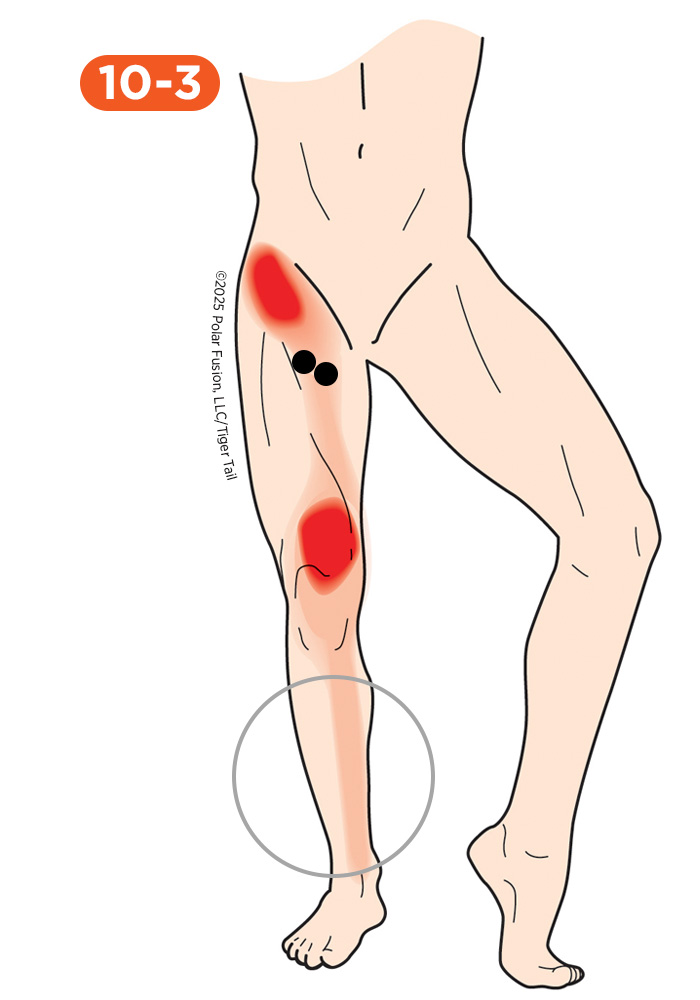
I Feel
Pain on the Inner Side of the Shin
Pain on the inner side of your shin that seems to come out of nowhere? It might be referred pain from tight muscle knots in one of your inner thigh muscles that helps bring your leg toward the midline of your body, the adductor longus. What you’ll feel is a deep, nagging ache along the inner edge of your shin bone that can travel down from your knee area, often resembling a dull, persistent throb that’s hard to pinpoint. You’ll really notice the pain worsening when you’re running (especially with quick direction changes), doing side-to-side movements like lateral lunges, playing sports that require sudden pivoting, climbing stairs, or even just walking with a wide stance. Here’s what makes this so tricky – because the adductor longus is up in your inner thigh, most people don’t realize it can send pain all the way down to the shin, making it easy to mistake for medial tibial stress syndrome (shin splints on the inside), stress fractures, or even bone issues. If you press into your inner thigh area (up high near your groin), the muscle will probably be extremely tender and sensitive, and your shin will feel achy and weak – like your leg wants to collapse inward.

I Feel
Outside of Shin Pain
That pain on the outside of your shin that won’t go away? It’s often caused by tight muscle knots in the muscles running down the outer side of your lower leg, specifically the peroneus longus and brevis. You may experience a sharp, burning ache along the outer edge of your shin and lower leg, which can radiate down toward your ankle, sometimes feeling like a tight cord running along the outside of your leg. The pain typically worsens when you’re running on uneven surfaces, walking on soft ground or the beach, or engaging in activities that require ankle stability, such as hiking. It can also happen when standing with your weight shifted to the outside of your feet or wearing shoes with poor arch support. Here’s the confusing part – because these muscles help prevent your ankle from rolling inward, when they become overworked and develop knots, the pain can easily resemble stress fractures, compartment syndrome, or nerve issues running down the outside of your leg. If you press along the outer side of your shin, your muscles will probably feel tender and rope-like, and your ankle may feel unstable and weak.
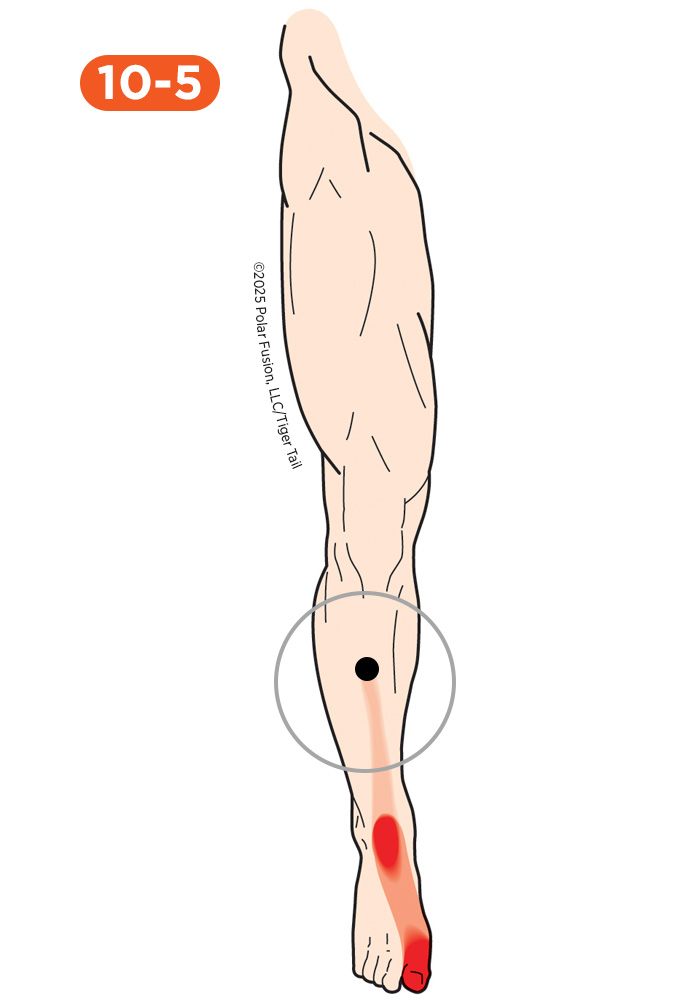
I Feel
Shin Splints
Struggling with shin splints that won’t go away? There’s a good chance you have tight muscle knots in the front of your shin, in the tibialis anterior. You’ll feel a deep, aching pain along the front of your shin bone, often with a sharp, burning sensation that worsens with activity. The pain intensifies when you’re running, walking on hard pavement, going downhill, doing high-impact exercises like jumping or box jumps, or even during those first steps after sitting. It can resemble stress fractures, bone inflammation, or compartment syndrome, leading people to think something is seriously wrong structurally. If you press on the front leg muscles, they’ll likely be very tender and possibly swollen, and your shin may feel tight and exhausted—as if the muscle has been overworked and is on the verge of giving out cramping.
Tibialis Anterior Overuse Syndrome
Chronic fatigue and weakness in the front of your shin that never seems to get better is often a sign of Tibialis Anterior Overuse Syndrome – a condition caused by constant trigger points and muscle knots in the muscle at the front of the shin, the tibialis anterior. What you’ll notice is a dull, heavy ache in the front of your shin that’s always present, sometimes turning into a deep, fatiguing burn that makes your foot feel like it’s dragging. You’ll really feel anterior shin pain worsening during repetitive activities like long-distance running, hiking on uneven terrain, walking for long periods (especially on hard surfaces), climbing many stairs, or any activity where your shin muscle never gets a break from lifting your foot. If you press on the muscle along the front of your shin, it will likely be very tender all over (not just in one spot), and your foot will feel constantly heavy and tired – as if you’re always fighting to lift your toes and your shin muscle is just worn out from being overused daily without proper rest.
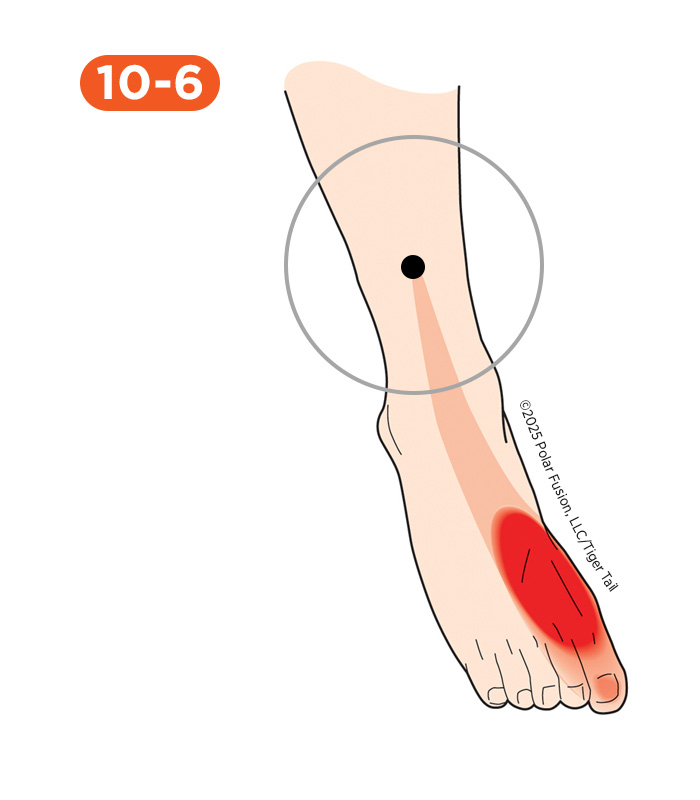
I Feel
Lower Shin Pain
That persistent pain in your lower shin that just won’t go away is often caused by muscle knots in the thin muscle along the front of the shin that lifts your big toe, the extensor hallucis longus. The pain from these knots is usually felt as a deep, burning ache along the inner front part of the lower shin, which may radiate down toward the ankle and big toe. Sometimes, it feels like a tight rope running down your leg, and this can be mistaken for shin splints, anterior compartment syndrome, or nerve compression issues. This discomfort is often linked to overuse from repetitive activities like running uphill, walking on your heels, doing tasks that require constant big toe lifting, wearing stiff shoes that limit toe movement, or hiking on uneven terrain where your toe constantly adjusts.
